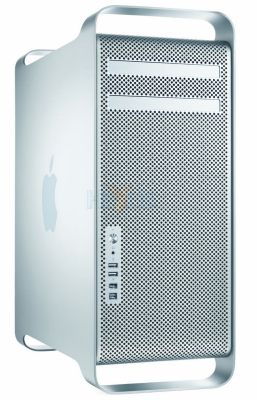The end of the desktop era.
The latest changes to my Hackintosh, which now see it once more delivering performance comparable to the best top-of-the-line Macs at no additional cost, raise the question of what the future holds.
The original design brief for the Hackintosh, which FU Steve built for me, was reliability, with a primary focus on proper cooling of components. Secondary requirements were speed and expandability. At the time of construction, two years ago, I anticipated the HackPro might enjoy a five year useful life. I am now inclined to think that was an underestimate.
If you compare the specs of Intel’s current i3/i5/i7 CPUs, which succeeded the Core2Duo and Core2Quad design (still made and still popular in PCs) the main difference is not in speed but in power consumption. The latest graphics cards barely improve on the Nvidia 9800GTX+. Intel is bowing to the trend which favors mobile computing, meaning laptops, where battery power use is important. Low power consumption CPUs with integrated GPUs add more value than greater speed. And adding more cores is futile. Absent some exotic statistical math applications, plus super speed weather/military computers and the like, multi-core CPUs are wasted on what we photographers use daily. For that matter, four cores are largely wasted, poor application programming failing to make effective use of the available parallel processing potential. Don’t believe me – run Lightroom on a 2 core then a 4 core CPU. Notice any difference?
Since the HackPro was built, iOS and Android, cell and tablet operating systems, have taken the world by storm. While nowhere near as fast as desktop/laptop OSs, they add a whole range of capabilities – fast AppStore downloads, huge app selections, touch interfaces, great UIs – which are quickly migrating the desktop and laptop to the category of mature technologies. The return on incremental investment in these latter technologies falls daily, as Mobile is where the money is. Four years ago Apple introduced the iPhone. Today the iPhone and iPad account for three quarters of the company’s sales! The consequences of this trend are that desktop development will slow to a crawl and prices will cease falling as sales volumes fall. Sure, there will always be demand from artists, scientists, cinematographers and photographers for heavy duty iron but that population is minuscule.
Desptop/laptop OSs have also peaked. Windows 7 (I have not used it so this is apocryphal) is reported to be reliable (a twenty year miracle in the making) and speedy, and OS Lion may well be the last major version of OS X, though after using Lion for a while it’s clear that the changes are very minor ones in UI cosmetics and add little benefit for the working stiff. You aren’t going to make your machine any faster by installing Lion, that much is certain, though users ought to be grateful for an absence of code bloat and forced hardware updates, for the most part.
Desktop applications are likewise mature. Adobe isn’t about to fix the execrable UI of Photoshop when it has a static audience which will dutifully upgrade every 18 months for minor improvements at the margin, using corporate money. And they can’t add too many of PS’s features to the far friendlier Lightroom for fear of cannibalizing their cash cow. But I am happy to wager that they are working like stink on mobile versions of their apps. Sure, some apps like Pixelmator will capture amateur users who (rightly) balk at CS5’s ridiculous price, but the design pro has zero incentive to save his employer money or to risk his career on an unknown quantity, no matter how good.


Dinosaurs. The HackPro and its patrician brother.
The biggest benefits to desktop users in recent years have come from flash storage Solid State Drives and improving broadband, both technologies being pushed to improve by burgeoning demand for mobile devices. Intel’s Light Peak data transfer technology (Apple calls it Thunderbolt) will increase wired data transfer rates ten fold while cutting the number of connecting cables. LCD monitor technology has reached price-quality equilibrium. Who needs higher definition or larger screens than what those already afforded at reasonable cost today? What the world needs is faster broadband and better batteries, not faster CPUs or better displays.
I look at our 9 year old son. I would far rather he learned the iPad, maybe with the eventual addition of a keyboard, than an iMac. If he wants a big screen display it’s there at the touch of an icon, no wires needed. Wikipedia has obsoleted space gobbling encyclopedias and access is instantaneous. His music is accessible anywhere, he can print anywhere (if he even cares what a printer actually is) and even he can lug around the modest weight of a tablet all day. He has access to millions of books and thousands of newspapers at no weight or storage cost and his tools for learning math and spelling are all there at a touch. If he gets serious about taking pictures, all the processing power he will ever need will be on his tablet in a year or two and the camera will likely be a part of that tablet too. And I will be making sure that one of the developed world’s worst educational systems – it’s called US schooling – will not stand in his way.
So why force him to learn yesterday’s technology?
Those magnificent dinosaurs, the desktop computers of our time, will soldier on in dwindling numbers for a generation yet, after which time they will be so much landfill.
Yes exporting photographs in lightroom works much faster on multi-core.